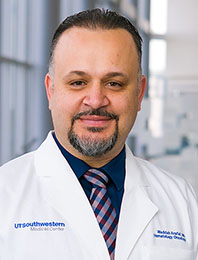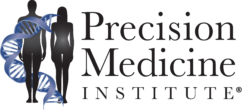Health centers and providers appear to be overcoming more hurdles to genomics-informed healthcare and shared decision making
A recent development at the University of Texas Southwestern may mean that genomics is inching closer to becoming part of clinical decision making, at least in one health network. The academic medical center announced it has received a $300,000 grant from the National Comprehensive Cancer Network (NCCN), funded by Eli Lilly and Company, that will support the “design and implementation of integrated decision tools and an associated workflow to enable users to readily and strategically search tests and relevant diagnoses.”
One of the barriers to precision medicine thus far is that the ability to extract practical clinical insights from genomic data is relatively limited. This may be due to a lack of standards for the transfer of structured genomic information, as noted by a workgroup of the American College of Medical Genetics and Genomics (ACMG) in late 2020. In addition, the data is not easily accessible to physicians within the flow of a patient’s health records.
A key piece of UT Southwestern’s NCCN grant project for genomics is that it will integrate NGS results with electronic health records (EHRs), taking non-small cell lung cancer care to a new level potentially.
Questions Leading Genomics Data Use in the EHR
With the exploration of large-scale application of genomics for population screening, when and how to incorporate genomics into the EHR has been discussed for several years. In 2015, National Academies Press (NAP) devoted an entire workshop summary publication to “genomics-enabled learning health care systems.”
About using genomics data in the EHR, numerous questions were raised that will be helpful for hospital and health system leaders contemplating the path forward. From a practical standpoint, the points raised include:
- Who will benefit in the initial stages of integration when not everyone can be included in such a system? Who will make these decisions before they become universal?
- Toward informed consent, will everyone have to opt in or opt out?
- Will patients be able to see all their genomic information, including incidental findings? How might this influence testing? One possibility is that patients will be overtested when genomic information is available.
- Are providers expected to review every piece of available information, and how will the use of genomic data by providers be monitored?
The full report and expert perspectives can be found on the National Academies Press website.
UT Southwestern EHR Genomics Interface

However, in UT Southwestern’s case, “The goal now is to create a seamless interface with NGS laboratories so test results integrate into the chart as discrete data—presented in the way that results appear from a blood panel,” according to the news release, which states that UT Southwestern was an early adopter of Epic’s genomics module, an interface that enables the user to receive NGS data directly from the laboratory doing the test. “Physician alerts are sent selectively at ‘nodes’ in the decision tree of care to prevent alert fatigue.”
The new interface will initially be designed specifically for precision medicine applications focused on non-small cell lung cancer treatments. While the initial scope will be limited, UT Southwestern researchers expect be able to use the framework as a template for other personalized medication applications. However, it is anticipated that even the limited initial focus will have a meaningful clinical impact.
“We run NGS on lung cancer patients almost universally nowadays, checking maybe 300 to 600 genes for somatic mutations,” explained Waddah Arafat, MD, Medical Director of Cancer Clinical Informatics at the Harold C. Simmons Comprehensive Cancer Center in Dallas. “These are genes that cause cancer or are significant for the control of cancer growth, spread, and, sometimes, resistance to standard treatment. Yet genomic test results come back in a way that often is delayed relative to the treatment plan, and not available at point-of-care. Solving this problem became our mission,” added Arafat, whose “Harnessing an Electronic Health Record (EHR) Genomics Module to Guide Clinical Decisions for Non-Small Cell Lung Cancer (NSCLC) Care” project was announced in January by the NCCN Oncology Research Program (ORP).
The UT Southwestern interface will be designed in a way that simplifies the process of evaluating the insights that NGS offers clinicians, making it easier for clinicians to order the correct medications.
“Precision medicine based on molecular profiling of tumors has had a tremendous impact on multiple types of cancer,” said David Gerber, MD, a lung cancer specialist and Associate Director of Clinical Research at the Simmons Cancer Center. “We’ve identified about 10 different genomic subsets of lung cancer that have their own available targeted therapies. But if you don’t order the test, you’re not going to know what drugs to prescribe.”
Learning Curves
Ultimately, genomics will make possible shared decision making, allow new research, drive improvements in population health, optimize care, and prevent complications.
Genetic and genomic testing is already being done in many healthcare organizations. However, it has been said that the integration of genomic measurements into healthcare is outpacing the training of physicians and scientists to effectively use the information to improve the health of patients. In addition, genomics results typically are reported on paper or scanned PDFs that cannot be clinically integrated within the patient context. Test results also may not be translated into clinical vocabulary that is meaningful or actionable for providers.
Overcoming the obstacles appears to be a multi-year process. Take the Perelman School of Medicine at the University of Pennsylvania. In 2017, Penn Medicine received Institutional Training Grants for genomic science from the National Human Genome Research Institute of the National Institutes of Health. And by 2021, IT teams at Penn Medicine were making progress with their own EHR interface for discrete genomics data, according to an article published at Healthcare Innovation.
In addition, there is growing commercial interest as companies such as Genomenon and SOPHiA GENETICS have developed clinical interfaces that enable improved access to genomic insights.
Healthcare leaders should take the time to evaluate and assess these technologies and solutions that can bring genomics data directly into the EHR workflow, allowing providers to use it in real-time clinical decision-making (e.g., should I prescribe antidepressant A or antidepressant B?), offers Medical Economics. New platforms are emerging that bridge the gap between the science of genomics and making the data useful at the point of care.
—Caleb Williams
Related Information:
Grant Supports UTSW Push to Make Genomic Data More Accessible
The Interface of Genomic Information With the Electronic Health Record
A Points to Consider Statement of the American College of Medical Genetics and Genomics (ACMG)
The Precision Medicine Revolution
Penn Medicine Makes Progress on Flow of Genetic Results into EHR
